|
Are your memories really in your brain?
How did you do?
Most of Sperling's subjects had great difficulty with this second test. This is because there is a delay of a half-second between the showing of the matrix and the request for a specific row of letters. This small delay is apparently enough time to allow the sensory memory to decay. Short Term memory
I've designed a test that will measure your short term memory. It involves selecting pairs of squares in a grid which, when selected, reveal unique patterns. The idea is to remember where these patterns appear in the grid so you can select both identical patterns. Each time you select an identical pair they will be eliminated. When you have eliminated all of the patterns you will see a score which indicates how many attempts you needed to complete the task. When you CLICK HERE a new window will open. Good luck.
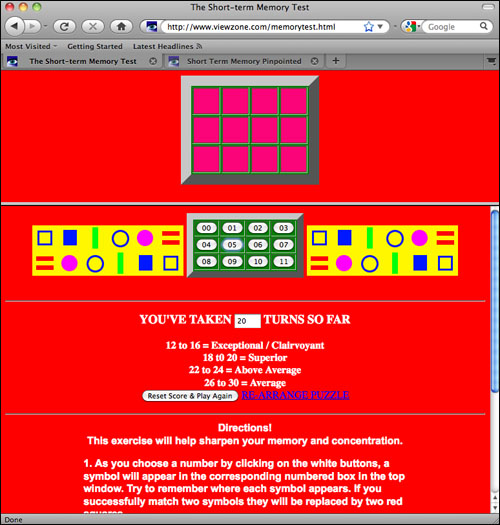 Long Term Memory What's your oldest memory? I can remember falling off a chair when I was just 3 years old. I'm not sure the memory is a perfect copy of what happened. What I remember mostly about it was that my mother gave me a chocolate cookie to stop me crying. So maybe the memory is more about chocolate than the fall. We archive lots of things in our mind. But the reliability of old memories can fade or be altered with time. Some psychiatrists have used hypnosis to retrieve old memories such as childhood abuse but the courts do not yet accept these as legally truthful. In the past decade, many women undergoing hypnosis therapy recalled being molested by a family member. While some of these were related to real events, many were proven false. So how does that work?
Long Term Memory is better served fresh Certain traumatic events can apparently be blocked from long term memory. Alcoholics sometimes suffer "blackouts" where chunks of time can never be recalled. Certain types of amnesia can be associated with brain injuries or severe psychological stress, like a war or violent accident. Again, these don't necessarily imply that the memories, wherever they are stored, are gone. Rather it suggests that the mechanism for their retrieval has somehow been impeded. Studies show that it takes some time to convert short term memory to long term archival memory. It appears that the activity immediately following the short term memory event is crucial. When subjects in an experiment were asked to memorize lists of words, they found it difficult to recall those words they tried to memorize immediately before being distracted. The distraction was a simple mathematical task (deducting 3 from a number). Something needs to happen in a small but critical window of time for the brain to "write" the information from the sort to long term memory. For the efficient storage of long term memories it is now thought that sleep is the vital process. Students should take notice of this because it implies that "cramming all night" with books may defeat success on an exam. It might be better to just go to bed and get good night's sleep. In a recent article in ScienceDaily, it was shown that sleep reduces memory mistakes, according to a first-of-its-kind study led by a cognitive neuroscientist at Michigan State University.
Study participants were exposed to lists of words and then, 12 hours later, exposed to individual words and asked to identify which words they had seen or heard in the earlier session. One group of students was trained in the morning (10 a.m.) and tested after the course of a normal sleepless day (10 p.m.), while another group was trained at night and tested 12 hours later in the morning, after at least six hours of sleep. Three experiments were conducted, using different stimuli. In each, the students who had slept had fewer problems with false memory -- and chose fewer incorrect words. In another study it was discovered that a brief bout of non-REM sleep (45 minutes) obtained during a daytime nap clearly benefits a person's declarative memory performance. The study, authored by Matthew A. Tucker, PhD, of the Center for Sleep and Cognition and the department of psychiatry at Harvard Medical School, focused on 33 subjects (11 males, 22 females) with an average age of 23.3 years. The participants arrived at the sleep lab at 11:30 a.m., were trained on each of the declarative memory tasks at 12:15 p.m., and at 1 p.m., 16 subjects took a nap while 17 remained awake in the lab. After the nap period, all subjects remained in the lab until the retest at 4 p.m. It was discovered that, across three very different declarative memory tasks, a nap benefited performance compared to comparable periods of wakefulness, but only for those subjects that strongly acquired the tasks during the training session How does sleep help? The answer isn't known.Perhaps the people who didn't sleep during the study were simply bombarded with information over the course of the day, affecting their ability to process what they had put into short term memory. Sill a mystery While we do not know exactly where memories are stored -- or even HOW they are encoded -- it does appear that there is some biochemical process involved. Memories associated with learning have structural and chemical changes that can be detected by various brain scans. The need for undisturbed "processing time" (i.e. sleep) further suggests that some biological mechanism is involved. The problem is that we don't know what form of information -- electrical or chemical -- is involved with thinking and consciousness. Human memory appears to be much more complex than computer data, which is stored as binary "1 or 0" codes. It seems to involve more than one region of the brain and the stored data can be altered and combined in ways that we do not yet understand. Memory and consciousness is truly the final frontier for science and may potentially bridge the gap between science, religion and philosophy when it is realized. Editor's Note: After posting the story I was sent this article which suggests that memories are stored in virtually all the cells of the body! It's worth reading... check it out: Cellular Memory in Organ Transplants Leslie A. Takeuchi, BA, PTA In my experience as a physical therapist assistant, I have come to acknowledge the relevance of thoughts, emotions and spiritual beliefs to healing. I recognize the art of physical therapy to be based upon empirical science and a dualism which views the mind and body as separate, thus drawing a sharp distinction between sensory experiences and physical reality, between subject and object, between mind and matter and between soul and body. However, I also recognize that even though my science provides a rational foundation, it does not allow for the importance of the subjectivity and wholeness I see in my patients whose bodies and minds are inseparable. In my work with the chronic pain population, I have taken a closer look at this relationship of mind and matter, body and emotions, for keys to how people heal. In this search, I looked into theories of emotions or memories being somehow stored in the tissues of the body and later manifesting in the physical form of pain or disease. What was most striking were the numerous reports of organ transplant recipients who later experienced changes in personality traits, tastes for food, music, activities and even sexual preference. Is it possible that our memories reside deep inside our bodily cells in addition to in our minds? Current understandings about memory, for example, place this mental capacity solely as a function of the brain. However, the process of memory may be too complex to be explained by measuring brain activity through electroencephalograms or oxygen uptake as recorded on PET scans. Looking at memory as part of the quantum world of sub-atomic systems gives the visual image of tiny specks whizzing around every which way until there is a need for them to come together into some sort of pattern of awareness. But, where do the memories reside? Candace Pert, author of Molecules of Emotion: Why You Feel the Way You Feel, says, "Memories are stored not only in the brain, but in a psychosomatic network extending into the body . . . all the way out along pathways to internal organs and the very surface of our skin." After having discovered neuropeptides in all body tissues, Pert suggests that through cellular receptors, thoughts or memories may remain unconscious or can become conscious-raising the possibility of physiological connections between memories, organs and the mind. University of Arizona scientists and co-authors of The Living Energy Universe, Gary Schwartz, PhD, and Linda Russek, PhD, propose the universal living memory hypothesis in which they believe that "all systems stored energy dynamically . . . and this information continued as a living, evolving system after the physical structure had deconstructed." Schwartz and Russek believe this may explain how the information and energy from the donor's tissue can be present, consciously or unconsciously, in the recipient. Paul Pearsall, MD, a psychoneuroimmunologist and author of The Heart's Code, has researched the transference of memories through organ transplantation. After interviewing nearly 150 heart and other organ transplant recipients, Pearsall proposes the idea that cells of living tissue have the capacity to remember. Together with Schwartz and Russek, Pearsall conducted a study, published in the Spring 2002 issue of the Journal of Near-Death Studies, entitled, "Changes in Heart Transplant Recipients That Parallel the Personalities of Their Donors." The study consisted of open-ended interviews with 10 heart or heart-lung transplant recipients, their families or friends and the donor's families or friends. The researchers reported striking parallels in each of the cases. The following is a sampling of some these.
In another case, a seven-month-old boy received a heart from a 16-month-old boy who had drowned. The donor had a mild form of cerebral palsy mostly on the left side. The recipient, who did not display such symptoms prior to the transplant, developed the same stiffness and shaking on the left side. A 47-year-old Caucasian male received a heart from a 17-year-old African-American male. The recipient was surprised by his new-found love of classical music. What he discovered later was that the donor, who loved classical music and played the violin, had died in a drive-by shooting, clutching his violin case to his chest. A 29-year-old lesbian and a fast food junkie received a heart from a 19-year-old woman vegetarian who was "man crazy." The recipient reported after her operation that meat made her sick and she was no longer attracted to women. If fact, she became engaged to marry a man. A 47-year-old man received a heart from a 14-year-old girl gymnast who had problems with eating disorders. After the transplant, the recipient and his family reported his tendency to be nauseated after eating, a childlike exuberance and a little girl's giggle. Aside from those included in the study, there are other transplant recipients whose stories are worth mentioning, such as Claire Sylvia, a woman who received a heart-lung transplant. In her book entitled, A Change of Heart: A Memoir, Ms. Sylvia describes her own journey from being a healthy, active dancer to becoming ill and eventually needing a heart transplant. After the operation, she reported peculiar changes like cravings for beer and chicken nuggets, neither of which she had a taste for prior to the transplant. She later discovered that these were favorites of her donor. She even learned that her donor had chicken nuggets in his jacket pocket when he died in a motorcycle accident. Another possible incidence of memory transfer occurred when a young man came out of his transplant surgery and said to his mother, "everything is copasetic." His mother said that he had never used that word before, but now used it all the time. It was later discovered that the word had been a signal, used by the donor and his wife, particularly after an argument, so that when they made up they knew everything was okay. The donor's wife reported that they had had an argument just before the donor's fatal accident and had never made up.
Although medical science is not yet ready to embrace the ideas of cellular memory, one surgeon believes there must be something to it. Mehmet Oz, MD, heart surgeon at Columbia Presbyterian Medical Center, has invited an energy healer, Julie Motz, into the operating room during transplant surgery. Initially, Motz practiced energy healing to help reduce anxiety prior to surgery and depression following surgery. Then the team noticed that there seemed to be less incidence of rejection in these patients. They were curious to see what would happen if she were present during the operation. Motz registers, through sensations in her own body, the emotional state of the patient during the surgical procedure. Through her touch or words, Motz attempts to alleviate any worries, fears or anger the patient may be experiencing. She works with the recipient's ability to accept the new organ and also works with the donated tissue so it will accept a new body. The results have been favorable, and the team reports reduced rejection and increased survival rates. This may sound outrageous to those who never thought about tissues having feelings or caring about where they would reside, but Dr. Oz believes that it would be a disservice to ignore even the possibility that this method could help. More studies are being conducted with regard to the phenomenon of organ recipient and donor coincidences. Pearsall, Schwartz and Russek report that, "research is underway at the University of Arizona on a sample of more than 300 transplant patients to determine the incidence of such transcendent memory phenomena using semi-structured interviews and systematic questions." Intriguing questions remain. What percentage of transplant recipients actually do feel changes in behavior and personality or report changes in food preference or have new memories? Is there a higher incidence of tissue or organ acceptance in those patients who are aware of their consciousness or who have energy work done? Will ordinary science offer more evidence to support that memories are transferred-or will we need a new science? Perhaps more importantly, what does this transcendent phenomenon have to tell us about other healing events? Leslie A. Takeuchi, BA, PTA is a physical therapist assistant and is currently a graduate student in Holistic Health Education at John. F. Kennedy University in Orinda, California. An article about Julie Motz's energy healing work appeared in the June/July issue of San Francisco Medicine in 2000. Her book, "Hand of Life" was published by Bantam Books in 1998.
 Comments: |
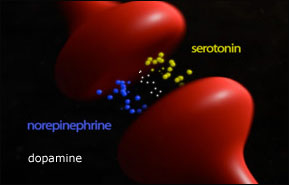 The next type of memory can persist for several seconds or even minutes. Short term memory is thought to result when brain cells release chemicals called neurotransmitters in the gaps (synapse) between each other in a particular pattern. They do this until the chemicals are all used up. The presence of these neurotransmitters in a specific pattern corresponds to the thought that is being remembered. The thought will remain as long as the neurotransmitters remain in these gaps. But there is a process called endocytosis where cells re-absorb the neurotransmitters and, when this is completed, the thought disappears.
The next type of memory can persist for several seconds or even minutes. Short term memory is thought to result when brain cells release chemicals called neurotransmitters in the gaps (synapse) between each other in a particular pattern. They do this until the chemicals are all used up. The presence of these neurotransmitters in a specific pattern corresponds to the thought that is being remembered. The thought will remain as long as the neurotransmitters remain in these gaps. But there is a process called endocytosis where cells re-absorb the neurotransmitters and, when this is completed, the thought disappears.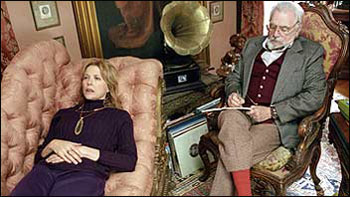 Archived memories are not "locked." When one is asked to recall any given memory, the brain encodes not only the questions that were asked to cue the retrieval, but also the resulting recollection, so the associated activity could therefore interfere with that which is being assessed. Thus, highly charged questions can become mingled with memories and change the recollection. Police interrogators have been confronted with this phenomenon after lengthy criminal interviews, sometimes having innocent people admit to crimes they did not commit.
Archived memories are not "locked." When one is asked to recall any given memory, the brain encodes not only the questions that were asked to cue the retrieval, but also the resulting recollection, so the associated activity could therefore interfere with that which is being assessed. Thus, highly charged questions can become mingled with memories and change the recollection. Police interrogators have been confronted with this phenomenon after lengthy criminal interviews, sometimes having innocent people admit to crimes they did not commit.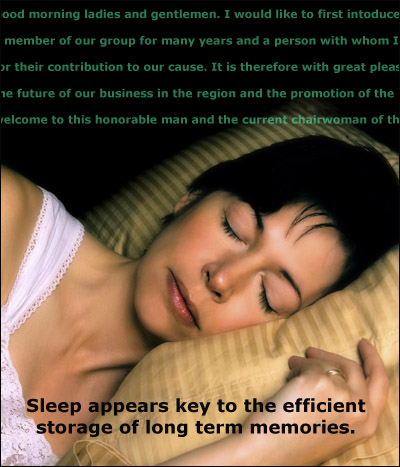 The findings, which appear in the September 2009 issue of the journal Learning & Memory, suggests that after sleep you're better able to tease apart the incorrect aspect of memories and recall the true information with less interference.
The findings, which appear in the September 2009 issue of the journal Learning & Memory, suggests that after sleep you're better able to tease apart the incorrect aspect of memories and recall the true information with less interference.
 In one case, an 18-year-old boy who wrote poetry, played music and composed songs, was killed in an automobile accident. A year after he died his parents came across an audiotape of a song he had written, entitled, "Danny, My Heart is Yours," which was about how he "felt he was destined to die and give his heart to someone." The donor recipient "Danny" of his heart, was an 18-year-old girl, named Danielle. When she met the donor's parents, they played some of his music and she, despite never having heard the song, was able to complete the phrases.
In one case, an 18-year-old boy who wrote poetry, played music and composed songs, was killed in an automobile accident. A year after he died his parents came across an audiotape of a song he had written, entitled, "Danny, My Heart is Yours," which was about how he "felt he was destined to die and give his heart to someone." The donor recipient "Danny" of his heart, was an 18-year-old girl, named Danielle. When she met the donor's parents, they played some of his music and she, despite never having heard the song, was able to complete the phrases.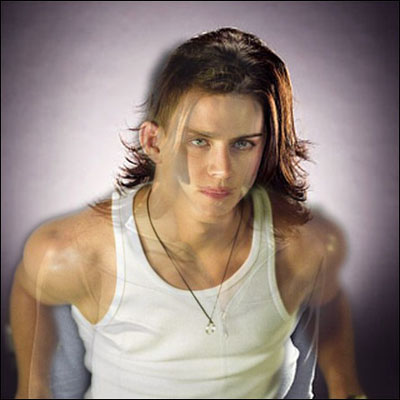 Another amazing story, reported by Pearsall, is that of an eight-year-old girl who received the heart of a ten-year-old girl who had been murdered. After the transplant, the recipient had horrifying nightmares of a man murdering her donor. The dreams were so traumatic that psychiatric help was sought. The girl's images were so specific that the psychiatrist and the mother notified the police. According to the psychiatrist, ". . .using the description from the little girl, they found the murderer. He was easily convicted with the evidence the patient provided. The time, weapon, place, clothes he wore, what the little girl he killed had said to him . . . everything the little heart transplant recipient had reported was completely accurate."
Another amazing story, reported by Pearsall, is that of an eight-year-old girl who received the heart of a ten-year-old girl who had been murdered. After the transplant, the recipient had horrifying nightmares of a man murdering her donor. The dreams were so traumatic that psychiatric help was sought. The girl's images were so specific that the psychiatrist and the mother notified the police. According to the psychiatrist, ". . .using the description from the little girl, they found the murderer. He was easily convicted with the evidence the patient provided. The time, weapon, place, clothes he wore, what the little girl he killed had said to him . . . everything the little heart transplant recipient had reported was completely accurate."